Venezuela Flag Meaning
Three horizontal stripes of yellow, blue, and red with eight white stars in an arc on the blue stripe and the coat of arms on the upper hoist corner, representing the wealth of the land, the seas separating Venezuela from Spain, the blood shed for independence, and the eight original provinces that declared independence.
- Continent
- South America
- Adopted
- 2006
- Ratio
- 2:3
- Colors
- yellow, blue, red, white
- Designer
- Francisco de Miranda
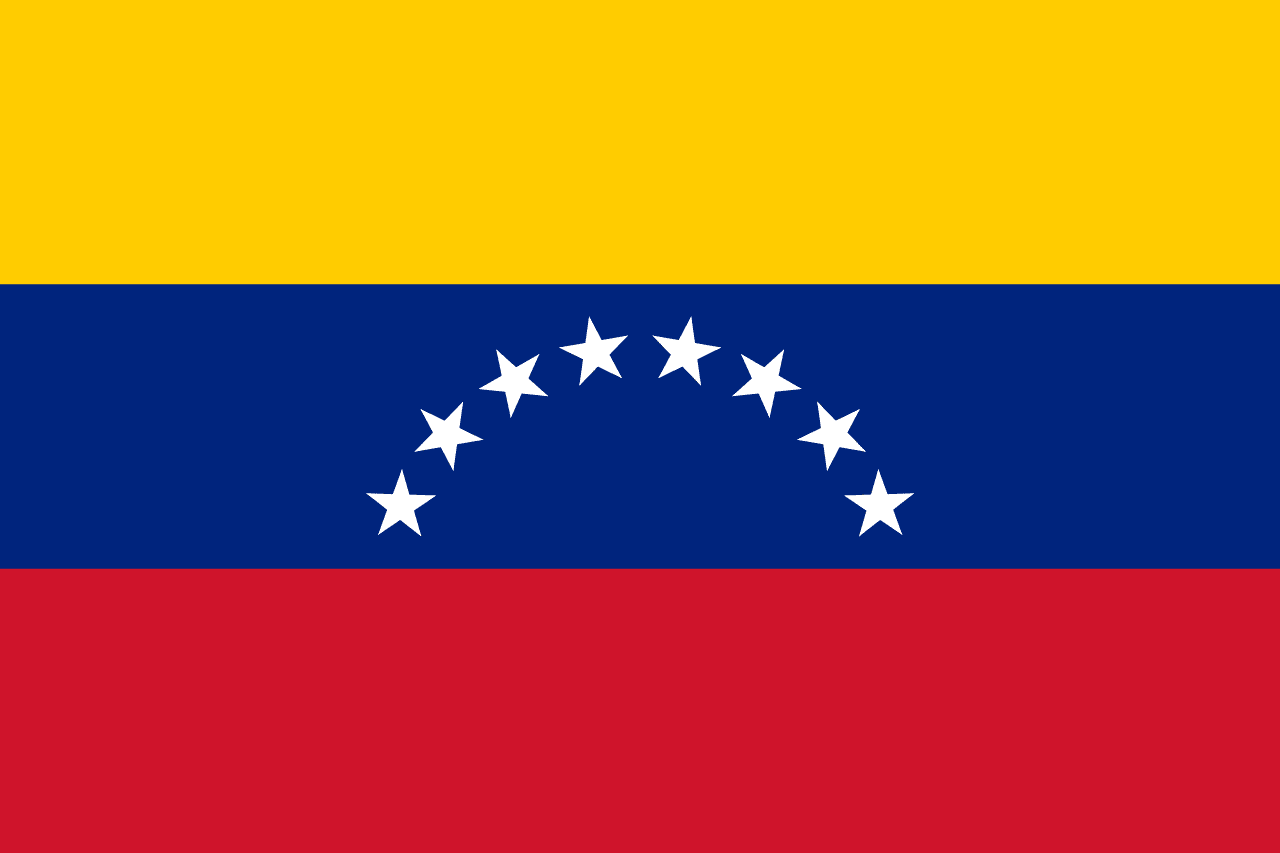
Symbolism
Yellow Stripe: Represents the wealth and riches of Venezuelan soil, including vast oil reserves, gold, and other natural resources, as well as the golden sunshine that blesses the tropical nation.
Blue Stripe: Represents the ocean that separates Venezuela from Spain, symbolizing independence from colonial rule, as well as the Caribbean Sea and Atlantic Ocean that border the country's northern coast.
Red Stripe: Represents the blood spilled by patriots during the wars of independence, symbolizing the courage and sacrifice of those who fought against Spanish colonial rule under the leadership of Simón Bolívar.
Eight Stars: Represent the eight original provinces that signed the Declaration of Independence in 1811: Caracas, Cumaná, Barcelona, Barinas, Margarita, Mérida, Trujillo, and later Guayana, symbolizing the federal nature of the republic.
Coat of Arms: Features a white horse representing independence, wheat sheaves symbolizing agriculture, and weapons representing the struggle for freedom, topped by cornucopias representing the country's abundance.
History
- Pre-Columbian Era: Indigenous peoples including the Caribs, Arawaks, and Chibchas inhabited the region, developing complex societies and trade networks before European contact in the late 15th century.
- 1498-1811: Spanish colonization began with Columbus's third voyage, establishing the Captaincy General of Venezuela and exploiting indigenous labor and later enslaved Africans for colonial agriculture and trade.
- April 19, 1810: The independence movement began with the establishment of the Supreme Junta in Caracas, initiating the struggle against Spanish rule that would define Venezuelan national identity.
- July 5, 1811: Venezuela declared independence and adopted the first version of the current flag colors, designed by Francisco de Miranda, though independence wouldn't be secured for another decade.
- 1819-1830: Venezuela became part of Gran Colombia under Simón Bolívar's leadership, uniting with Colombia, Ecuador, and Panama in Bolívar's dream of a unified South American federation.
- 1830-1935: Venezuela emerged as an independent republic but faced decades of caudillo rule, civil wars, and political instability while remaining a largely agricultural and pastoral economy.
- 1922: The discovery of oil at Lake Maracaibo transformed Venezuela into one of the world's major petroleum exporters, bringing unprecedented wealth but also economic dependence on oil revenues.
- 1958-1998: The Punto Fijo democracy established stable two-party rule between AD and COPEI, bringing relative prosperity and democratic governance during the height of oil boom years.
- 1999-2013: Hugo Chávez's Bolivarian Revolution brought socialist policies, constitutional reform, and increased authoritarianism while using oil revenues for social programs and international influence.
- March 9, 2006: The current flag design was adopted, adding an eighth star to represent Guayana province and moving the stars from a semicircle to an arc formation.
- 2013-Present: Under Nicolás Maduro's presidency, Venezuela has experienced severe economic crisis, hyperinflation, mass emigration, and international isolation amid disputed elections and authoritarian governance.
Trivia
- Venezuela has the world's largest proven oil reserves, containing an estimated 300+ billion barrels, which has both blessed and cursed the country's economic development.
- The flag represents the birthplace of Simón Bolívar, 'El Libertador,' who led the independence movements that freed much of South America from Spanish colonial rule.
- Angel Falls (Salto Ángel) in Venezuela is the world's highest uninterrupted waterfall, dropping 979 meters and inspiring the fictional Paradise Falls in the movie 'Up.'
- Venezuela is one of the most biodiverse countries on Earth, with habitats ranging from Caribbean beaches to Amazon rainforest to Andean mountains, hosting thousands of endemic species.
- Spanish is the official language, but over 40 indigenous languages are still spoken, reflecting the country's rich cultural diversity and pre-Columbian heritage.
- The country has won more international beauty pageants (Miss World, Miss Universe) than any other nation, with Venezuelan women winning dozens of major international titles.
- Baseball is the most popular sport in Venezuela, which has produced numerous Major League Baseball stars including Miguel Cabrera, Salvador Pérez, and José Altuve.
- Traditional Venezuelan music includes joropo (folk music), salsa, and gaita, while the four-stringed cuatro guitar is considered the national instrument.
- Venezuelan cuisine features dishes like arepa (corn cakes), pabellón criollo (shredded beef with rice and beans), and tequeños (cheese-filled fried sticks).
- The flag flies over a country that was once one of Latin America's wealthiest nations but has experienced one of the worst economic collapses in modern history.
- Over 7 million Venezuelans have emigrated since 2015, creating one of the world's largest refugee and migration crises in the Western Hemisphere.
- Venezuela has significant mineral wealth beyond oil, including gold, iron ore, bauxite, and diamonds, though political instability has limited development of these resources.
- The country is home to unique geographical features including tepuis (table mountains) that inspired Arthur Conan Doyle's 'The Lost World' and house endemic species.
- Traditional festivals include Carnival celebrations that blend European, African, and indigenous influences, with the Devils of Yare being a UNESCO-recognized cultural heritage.
- Despite current challenges, Venezuela maintains a strong cultural identity expressed through literature, art, music, and cinema that reflects its complex multicultural heritage.
Related Countries
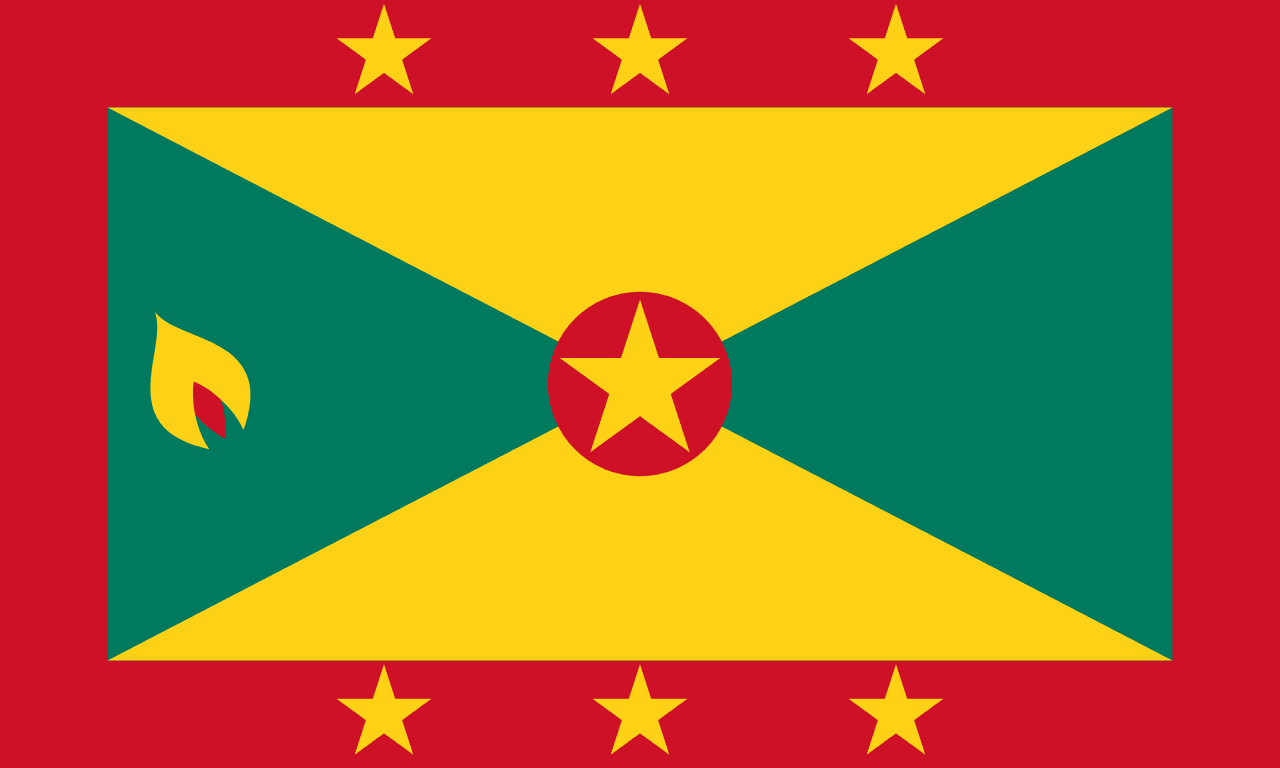
Grenada
North America
A red border surrounding yellow and green triangular sections with seven gold stars and a nutmeg symbol, representing the warmth of the people, sunshine and agriculture, vegetation and youth, and Grenada's fame as the 'Spice Island.'

Guyana
South America
A green field with a yellow arrowhead bordered in white pointing toward the fly, and a red triangle bordered in black at the hoist, known as 'The Golden Arrowhead,' representing the country's natural resources, diversity, and forward progress.

Colombia
South America
Three horizontal stripes with yellow taking the top half and blue and red each taking a quarter, representing the golden wealth of the land, the seas and rivers, and the blood shed for independence from Spanish rule.
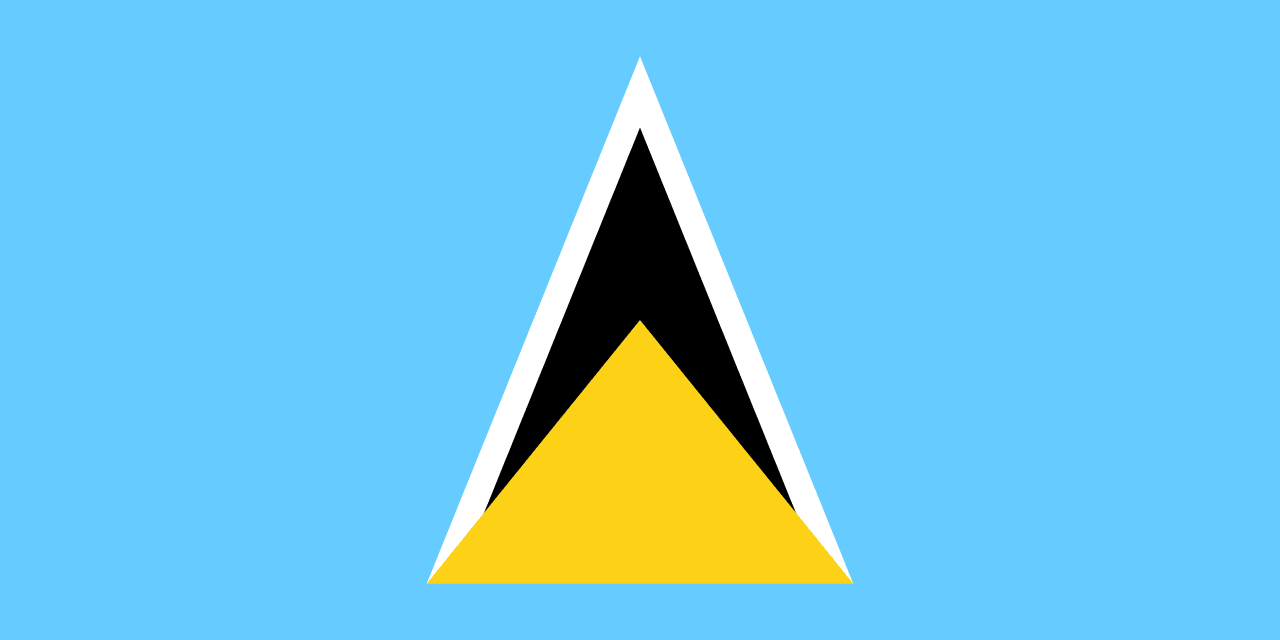
Saint Lucia
North America
A cerulean blue field with a gold isosceles triangle in front of a white-edged black triangle. The design reflects the island’s natural features and cultural heritage.
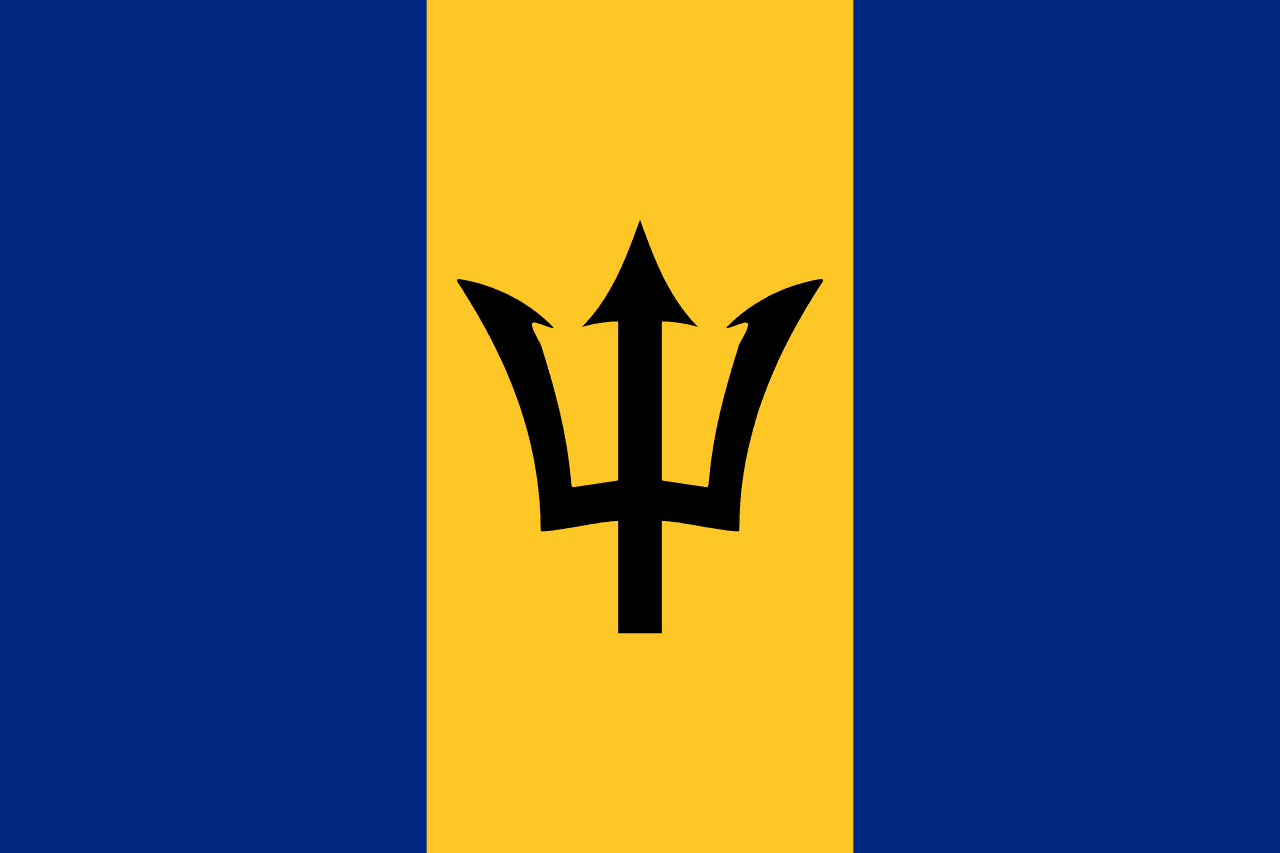
Barbados
North America
Three vertical stripes of ultramarine blue, gold, and ultramarine blue with a black trident head (broken from its staff) in the center golden stripe, representing the sea surrounding the island, the golden sands of its beaches, and the break from colonial dependence on Neptune's trident symbol.
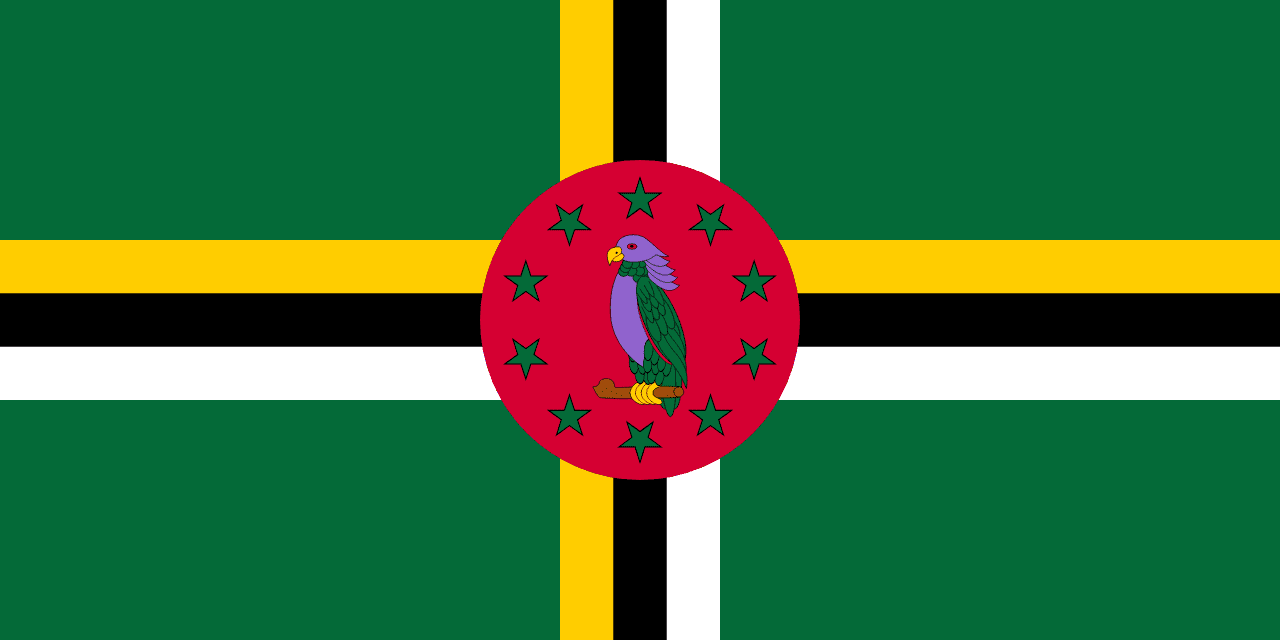
Dominica
North America
A green field with a cross pattern of yellow, black, and white stripes and a red circle in the center containing the Sisserou parrot, representing the lush vegetation, the Trinity, racial harmony, and the unique wildlife of the 'Nature Island of the Caribbean.'